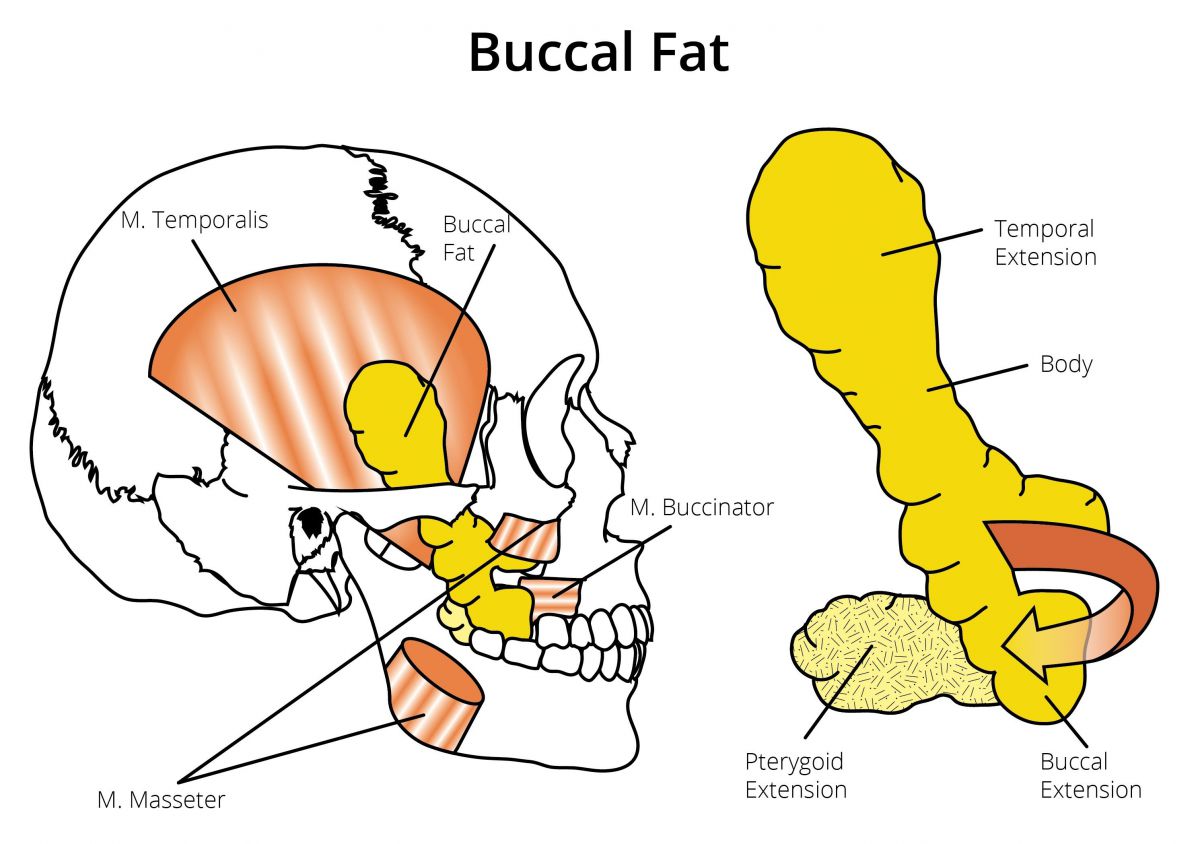The buccal fat pad is a deep pocket of fat situated below the malar eminence (cheek) and behind the buccinator muscle. Excess buccal fat pads often give rise to the appearance of an overly full and rounded cheek. The presence of such facial features is sometimes referred to as “chip monk cheeks”, “chubby cheeks” or “baby face cheeks”. The size of the buccal fat pad varies with each patient, and the buccal fat pad in each cheek may be different in sizes and volumes. These conditions are often hereditary and cannot be readily reduced by exercise or diet. These excess buccal fat pads can only be removed by surgery.

Buccal fat removal surgery is performed to improve the definition of the face, transforming an excessively rounded chubby cheek to a slightly more chiselled look. Buccal fat removal surgery is performed through an intraoral incision, on the inner portion of cheek adjacent to the top second molar tooth. This surgery is usually performed under local anaesthesia with light sedation. Once the surgery is completed, the wound is often closed with absorbable sutures.
Buccal fat removal surgery should not be performed in people with thin and narrow faces as removal of these buccal fats may result in haggard facial appearance. Buccal fat removal surgery can also be performed along with other procedures such as face-lift, chin augmentation or neck liposuction.
Ideal candidates for buccal fat removal surgery
- Bothered by the appearance of chubby cheeks
- Having a positive outlook, realistic expectations and specific goals in mind for the improvement of facial appearance
- Physically healthy with no active or severe pre-existing medical conditions
Preoperative evaluation for buccal fat removal surgery:
Communication is vital to achieving the patient’s goals. During the initial consultation, patients will have the opportunity to discuss their goals and desired results with the plastic surgeon. The plastic surgeon will work closely with the patients to reach an agreement about the expectations from the surgical procedures involved and their long term benefits. Every patient is different. Therefore a specific treatment regimen is planned to suit an individual’s need.
- Discussion about patients’ expectations and desired outcome
- Medical conditions, drug allergies and previous medical or surgical treatment
- Use of current medications, vitamins, herbal supplements, alcohol, tobacco and drugs
- Previous surgeries
- Examination of the face and its soft tissues
- Preoperative evaluation
- Discussion on choice and risks of anaesthesia
- Photography for preoperative and postoperative evaluation
Preparation for buccal fat removal reduction surgery
- Blood investigations or a medical evaluation
- Avoid certain medications or adjust your current medications
- Stop smoking or alcohol well in advance of surgery, (2-3 weeks before the surgery)
- Avoid taking aspirin and certain anti-inflammatory drugs and herbal supplements as they can increase bleeding
The risks and safety information on buccal fat reduction surgery
It is essential for patients to understand that every surgical procedure has its complications and risks involved. However, if a patient is appropriately assessed before the surgery and postoperative care is given adequately, these risks can be eliminated or reduced. The risks involved in masseter muscle reduction surgery are:
- Bleeding
- Blood clot
- Infection
- Poor wound healing at the incision site
- Bruises and swelling
- Injury to the facial nerves resulting in temporary or permanent facial muscle weakness
- Damage to the salivary duct
- Asymmetry
- Anaesthesia risks
- Possibility of revision surgery
Postoperative expectations:
The outcome of buccal fat removal surgery may not be apparent immediately after the surgery. It may take several months for the swelling and bruises to subside before the final results are seen. The expected outcome from the surgery will be a less chubby cheek. During the initial healing phase, the patient may experience pain, numbness, bruises and swelling around the cheek or neck areas. These symptoms usually fade away after 3-4 weeks. Oral antibiotics and analgesics will be prescribed to reduce the risk of infection and postoperative pain respectively.
Case No. 1:

Case No. 2:

Postoperative care:
- Follow the postoperative instructions given carefully
- Head elevation especially when sleeping for 3-4 weeks
- Take the prescribed medications as instructed
- Cold compressive dressing around the cheek might be used for 3-7 days
- Regular mouth wash or rinse after every meal
- Soft diet for 1-2 weeks.
